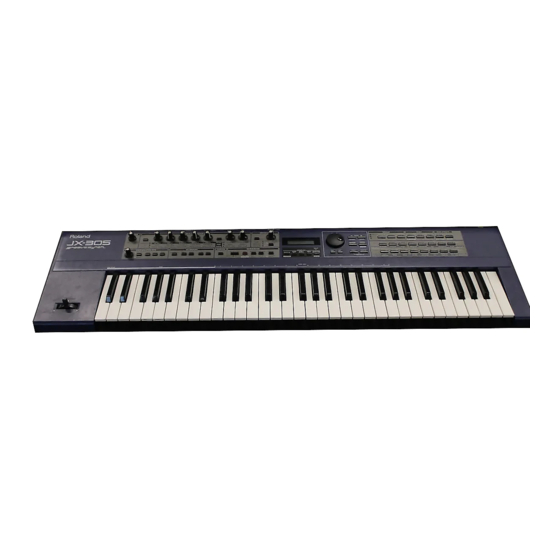
Roland JX-305 Manuals
Manuals and User Guides for Roland JX-305. We have 8 Roland JX-305 manuals available for free PDF download: Owner's Manual, Quick Start Manual, Service Notes, Replacement Manual
Roland JX-305 Owner's Manual (267 pages)
Groove Synth Synthesizer
Brand: Roland
|
Category: Synthesizer
|
Size: 17 MB
Table of Contents
Advertisement
Roland JX-305 Owner's Manual (264 pages)
Brand: Roland
|
Category: Synthesizer
|
Size: 3 MB
Table of Contents
Roland JX-305 Owner's Manual (266 pages)
Brand: Roland
|
Category: Synthesizer
|
Size: 11 MB
Advertisement
Roland JX-305 Owner's Manual (266 pages)
Brand: Roland
|
Category: Synthesizer
|
Size: 18 MB
Roland JX-305 Quick Start Manual (70 pages)
Brand: Roland
|
Category: Electronic Keyboard
|
Size: 6 MB
Roland JX-305 Quick Start Manual (70 pages)
Brand: Roland
|
Category: Electronic Keyboard
|
Size: 3 MB
Roland JX-305 Service Notes (28 pages)
Brand: Roland
|
Category: Synthesizer
|
Size: 3 MB
Table of Contents
Roland JX-305 Replacement Manual (9 pages)
LCD Replacement
Brand: Roland
|
Category: Synthesizer
|
Size: 2 MB







